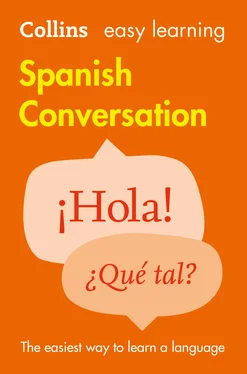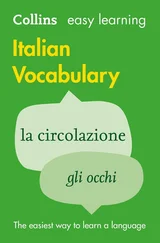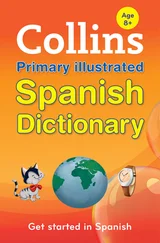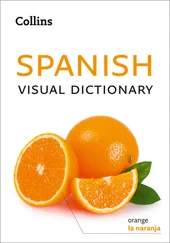| ¿ Crees que deboinvitar a su hermana? |
Should Iinvite his sister? |
| ¿ Crees que debollamarle otra vez? |
Should Icall him again? |
| ¿ Te parece buena ideair a un restaurante chino? |
Should wego to a Chinese restaurant? |
When talking to people you know, you’ll want to say what you think of things. In Spanish there are two main ways of doing this. You can either use creoor pienso, both of which mean literally I think . Or you can use me parece, which means literally it seems to me.
| Creo quetienes razón. |
I thinkyou’ve got a point. |
| Creo quedeberíamos irnos a medianoche. |
I thinkwe should leave at midnight. |
| Pienso queSonia tiene razón. |
I thinkSonia’s right. |
| Pienso quees un poco tarde para ir al cine. |
I thinkit’s a bit late to go to the cinema. |
| Me pareceuna idea estupenda. |
I thinkit’s a great idea. |
| A mí no me parece quesea así en absoluto. |
I don’t thinkthat’s the case at all. |
¿LO SABÍAS?
Don’t forget to add que( that ) after me parece, creoand pienso. It’s optional in English, but not in Spanish.
When you’re with friends and colleagues, you’ll probably want to suggest doing things together. One simple way of doing this is to use podríamos( we could ) followed by the infinitive. podríamoscomes from the verb poder. For more information on poder, see here.
| Podríamosquedar otro día. |
We couldpostpone until another day. |
| Podríamossalir a tomar algo alguna vez. |
We couldgo out for a drink sometime. |
| Podríamosquedar en el Café Central. |
We couldmeet at the Café Central. |
Just as in English, you can also make a suggestion simply by asking ¿Por qué no…?( Why don’t… ?).
| ¿ Por qué noles llamas? |
Why don’tyou phone them? |
| ¿ Por qué noinvitamos a Pablo y a su novia? |
Why don’twe invite Pablo and his girlfriend? |
| ¿ Por qué noquedamos algún día? |
Why don’twe get together sometime? |
| ¿ Quieres quecomamos juntos? |
Why don’twe have lunch together? |
Another way to make suggestions is to use ¿Y si… ?( How about…?) and a verb in the present tense.
| ¿ Y siles invitamos a cenar? |
How aboutinviting them for dinner? |
| ¿ Y site vienes con nosotros? |
How aboutcoming with us? |
| ¿ Y sipaso a por ti por la mañana? |
How aboutI pick you up in the morning? |
If you want to state your opinion, the Spanish en mi opiniónis just like the English in my opinion .
| En mi opinión,es una buena propuesta. |
In my opinion, it’s a good suggestion. |
| En mi opinión,no es verdad. |
It’s not true, in my opinion. |
| En mi opinión,va a causar problemas. |
In my view, it’ll cause problems. |
When you want to ask someone what they think of something, you can use the verb pareceragain, only this time in the phrase ¿Qué te parece…?( What do you think of…? ).
| ¿ Qué te parecesu última película? |
What do you think ofhis latest film? |
| ¿ Qué te parecela idea? |
What do you think ofthe idea? |
| ¿ Qué te parecióel nuevo equipo? |
What did you think ofthe new team? |
| ¿ Qué te parece? |
What do you think? |
To agree or disagree with what other people say, you can use estoy de acuerdo( I agree ) or no estoy de acuerdo( I don’t agree ).
| Estoy de acuerdo. |
I agree. |
| Estoy de acuerdo conMercedes. |
I agree withMercedes. |
| No estoy de acuerdo conesta decisión. |
I don’t agree withthis decision. |
| No estoyen absoluto de acuerdo conMaite. |
Icompletely disagree withMaite. |
| ¡ Estoytotalmente de acuerdo contigo! |
Ientirely agree with you! |
| ¿ Estás de acuerdo? |
Do you agree? |
¿LO SABÍAS?
Remember that contigois the way to say with you to someone you speak to as tú.
In Spanish, the verb tener( to have ) is used in the phrase tener razón( to be right ). For more information on tener, see here.
| ¡ Tienes razón! |
You’re right! |
| Creo que tienes razón. |
I think you’re right. |
| Es Antonio quien tiene razón. |
It’s Antonio who ’s right. |
You’ll want to make plans with business associates and friends. If you want to talk about a definite arrangement, for instance I’m seeing him tonight, you often use the future tense in Spanish. For more on the future tense, see here.
| Veréa Felipe el jueves. |
I’m seeingFelipe on Thursday. |
| La veréesta tarde. |
I’m seeingher this afternoon. |
| Iremosal cine esta noche. |
We’re goingto the cinema tonight. |
| Comeremosjuntos el próximo viernes. |
We’re having lunchtogether next Friday. |
¿LO SABÍAS?
Читать дальше












